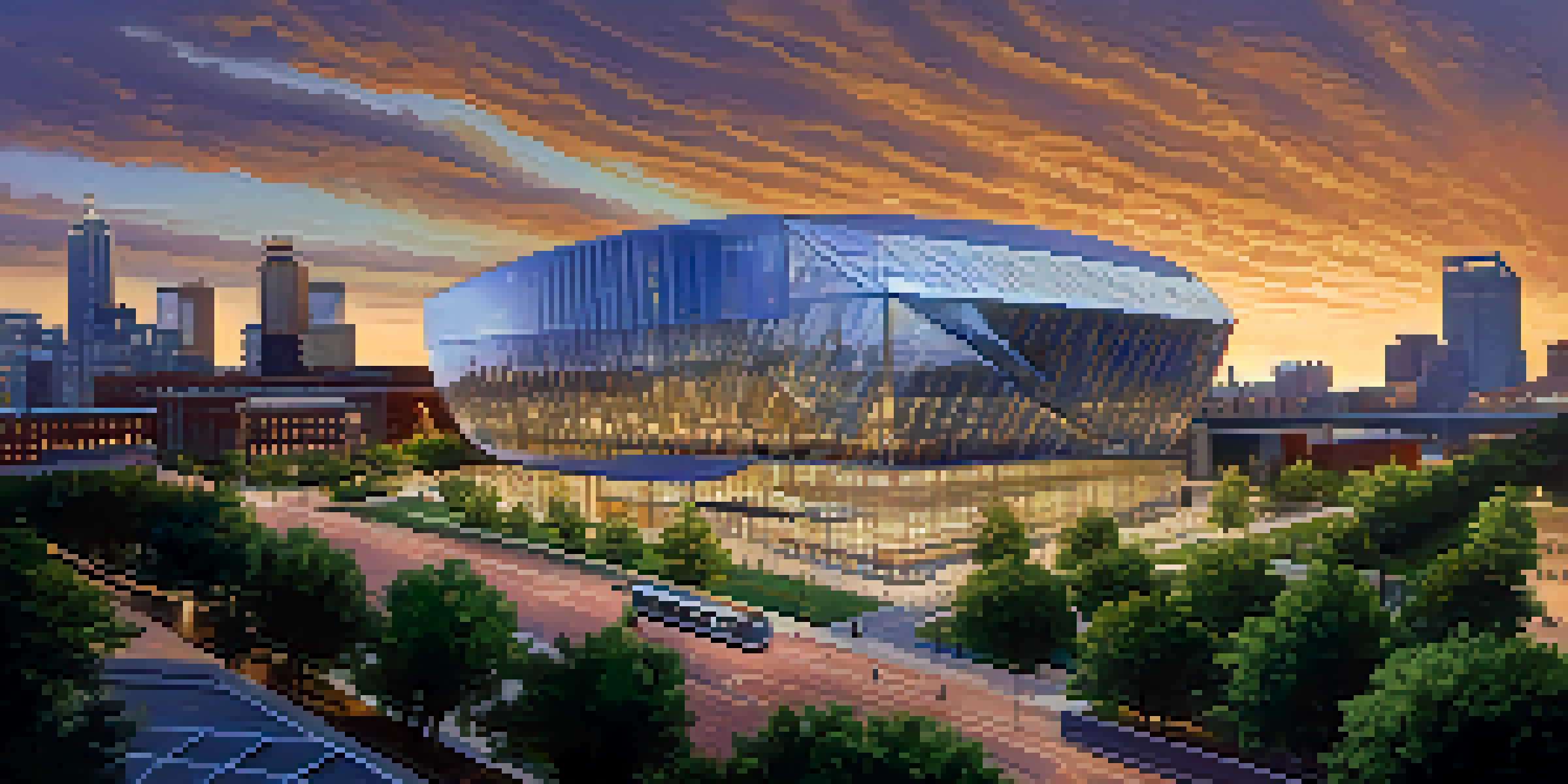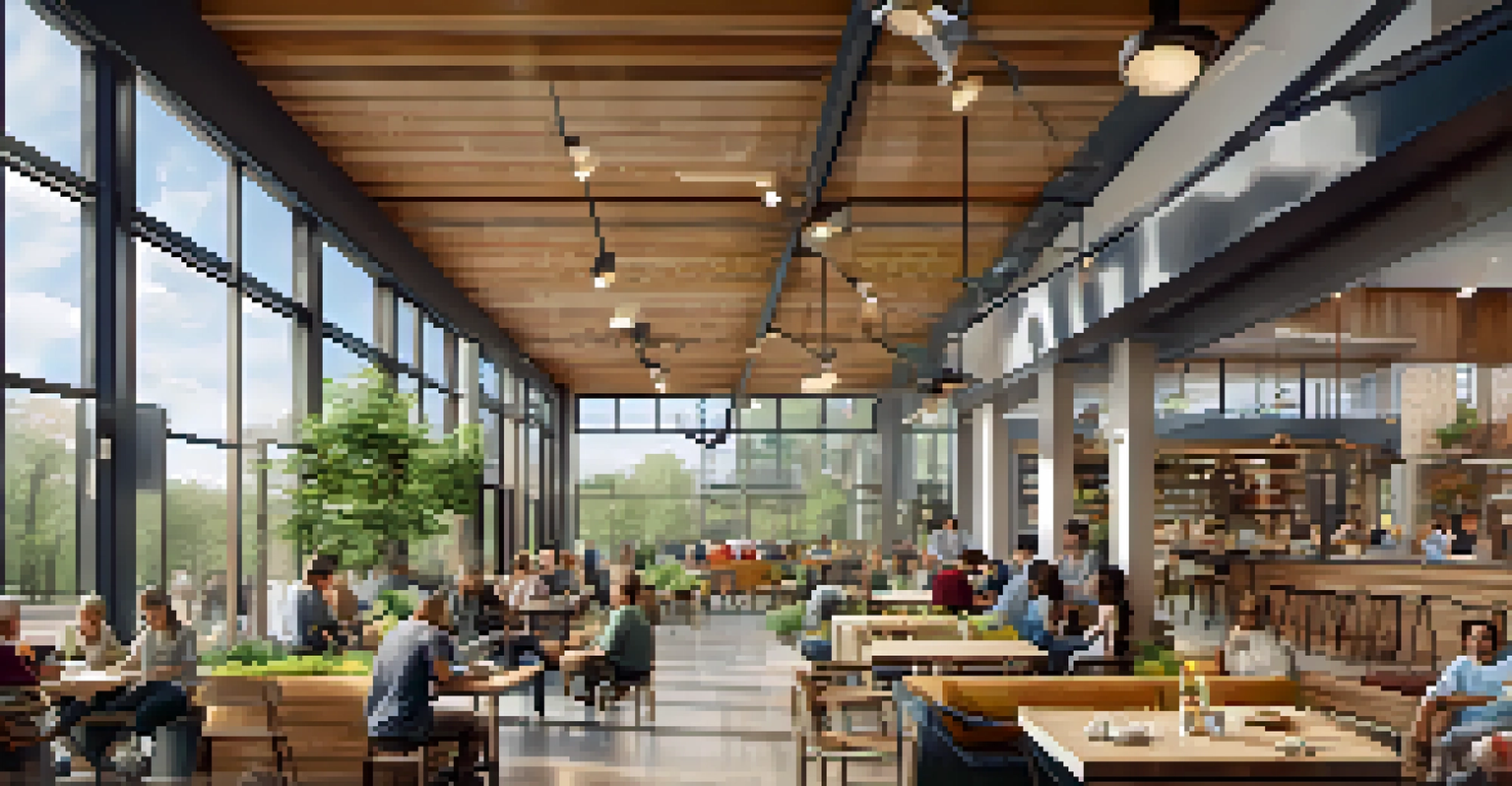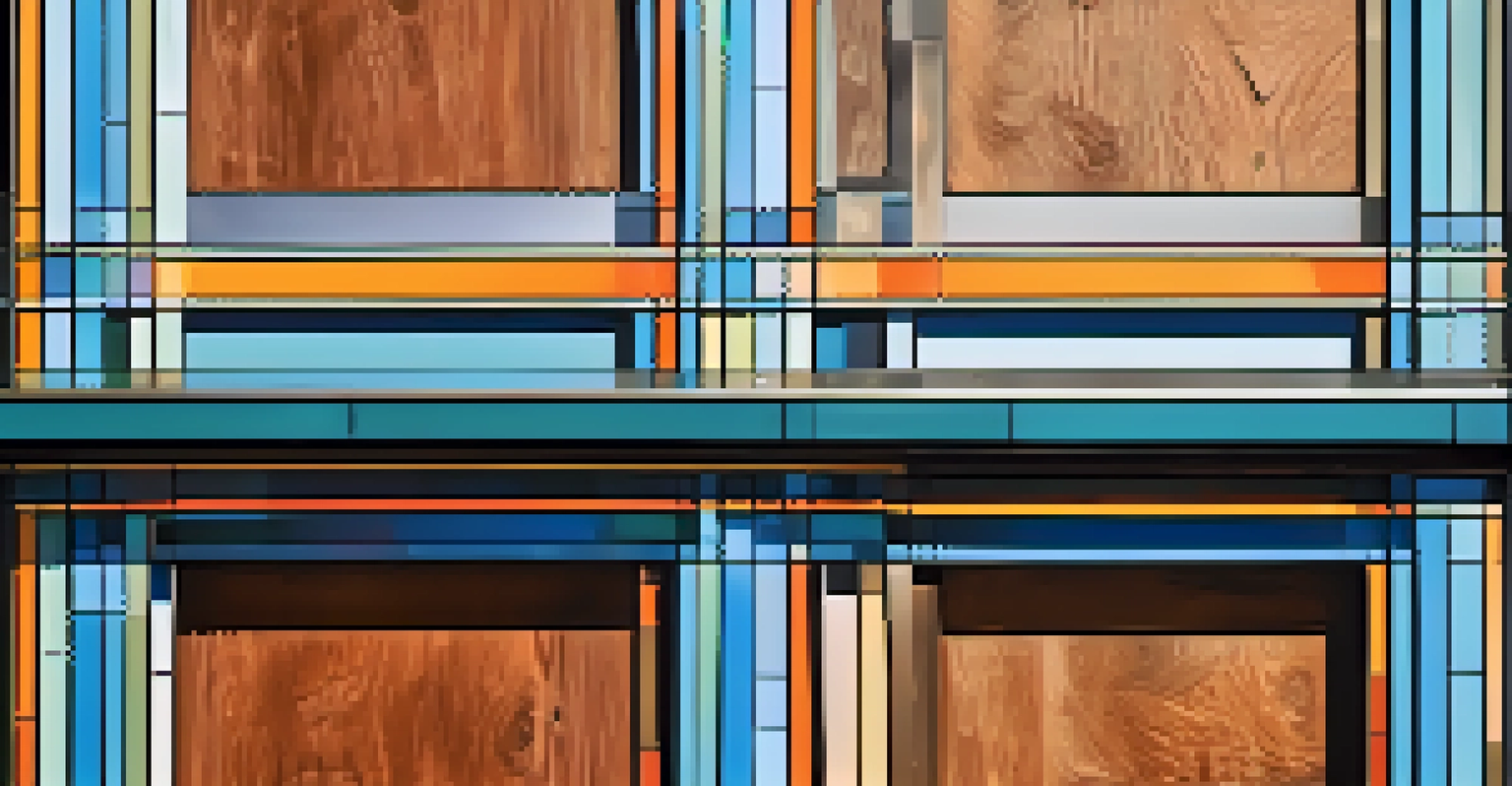Modern Designs in Minneapolis: Contemporary Architecture Trends

The Rise of Contemporary Architecture in Minneapolis
In recent years, Minneapolis has embraced contemporary architecture, marking a significant shift from traditional styles. This evolution reflects the city's commitment to innovation and sustainability, showcasing buildings that not only look modern but are also environmentally conscious. As you stroll through the urban landscape, you’ll notice structures that blend functionality with aesthetic appeal, making the city a vibrant hub for architectural enthusiasts.
Good design is about making other designers feel like idiots because that idea wasn't theirs.
One of the most notable aspects of this architectural trend is the integration of green spaces and natural materials. Architects are increasingly focused on creating buildings that harmonize with the surrounding environment. For instance, the use of wood, stone, and glass not only enhances visual appeal but also promotes sustainability by reducing carbon footprints.
Additionally, contemporary designs often prioritize open spaces and natural light, creating inviting atmospheres for residents and visitors alike. This approach not only enhances the quality of life but also encourages community interaction, making Minneapolis a thriving place for both work and play.
Innovative Use of Materials in Design
One hallmark of modern architecture in Minneapolis is the innovative use of materials. Architects are experimenting with a variety of textures and finishes, pushing the boundaries of traditional aesthetics. This trend is evident in buildings that showcase bold colors, unique shapes, and unexpected material combinations, creating visually striking landmarks throughout the city.

For example, the use of recycled materials is becoming increasingly popular, allowing architects to minimize waste while adding character to their designs. This not only supports sustainability efforts but also tells a story about the building's origins and purpose. Residents and visitors are drawn to these structures, appreciating both their beauty and their environmental consciousness.
Emphasis on Sustainability in Design
Minneapolis architects prioritize eco-friendly practices, integrating green materials and energy-efficient systems in contemporary buildings.
Moreover, the juxtaposition of old and new materials can often be seen in urban developments. By blending historic elements with contemporary designs, architects honor Minneapolis's rich history while simultaneously paving the way for the future. This fusion creates a unique architectural narrative that captivates the essence of the city.
Sustainable Practices in Modern Architecture
Sustainability is at the forefront of contemporary architectural trends in Minneapolis. Many architects are committed to designing buildings that not only meet the needs of today but also protect the environment for future generations. This has led to the development of structures that utilize energy-efficient systems, such as solar panels and green roofs, significantly reducing their ecological impact.
Architecture should speak of its time and place, but yearn for timelessness.
One shining example is the emphasis on passive design strategies, which focus on maximizing natural light and ventilation. This approach not only lowers energy costs but also enhances indoor comfort for occupants. In a city known for its harsh winters, such innovations are crucial for creating livable, efficient spaces.
Furthermore, the incorporation of green spaces within urban designs fosters biodiversity and enhances the overall quality of life. Parks, gardens, and green walls are becoming essential components of modern architecture, providing residents with a breath of fresh air amidst the urban hustle and bustle. This holistic approach to design reflects a growing awareness of our connection to nature.
Community-Centric Design Principles
Modern architectural trends in Minneapolis emphasize community-centric design, which prioritizes the needs and desires of local residents. This approach encourages architects to engage with the community throughout the design process, ensuring that buildings reflect the character and culture of the neighborhood. By fostering collaboration, these projects are more likely to resonate with those who will use and inhabit them.
One significant aspect of community-centric design is the incorporation of public spaces within residential and commercial developments. Parks, plazas, and communal areas not only enhance the aesthetic appeal of a building but also promote social interaction and community engagement. This sense of belonging is vital in a city known for its vibrant neighborhoods.
Community-Centric Architectural Trends
Modern designs in Minneapolis focus on engaging local communities, ensuring that new developments reflect the culture and needs of residents.
Moreover, the focus on accessibility ensures that spaces are welcoming to everyone, regardless of age or ability. By creating inclusive environments, architects are paving the way for a more equitable urban landscape. This commitment to community well-being is a defining characteristic of contemporary architecture in Minneapolis.
Embracing Technology in Architectural Design
Technology plays a crucial role in shaping modern architectural trends in Minneapolis. Architects are increasingly leveraging advanced software and tools to visualize and design spaces more efficiently. This not only streamlines the design process but also allows for greater creativity and innovation in building layouts and aesthetics.
For instance, 3D modeling and virtual reality technology enable architects to create immersive experiences for clients, allowing them to visualize the final product before construction begins. This level of engagement leads to more informed decisions and ultimately results in buildings that better meet the needs of their users. It’s like having a sneak peek into the future of your space.
Additionally, smart building technologies are becoming more prevalent, integrating systems that enhance energy efficiency and overall functionality. From automated lighting to intelligent climate control, these innovations contribute to a more sustainable and user-friendly environment. As technology continues to evolve, it will undoubtedly influence the way we design and interact with our built spaces.
Iconic Contemporary Buildings in Minneapolis
Minneapolis is home to several iconic contemporary buildings that exemplify the city's architectural evolution. One standout is the U.S. Bank Stadium, known for its striking design and innovative use of materials. This stadium not only serves as a premier sports venue but also as a gathering place for community events, showcasing the multifaceted role of modern architecture in urban life.
Another notable example is the Wells Fargo Place, which has become a symbol of the city's skyline. Its sleek design and sustainable features reflect the growing trend towards eco-friendly high-rise buildings. The incorporation of green technologies not only enhances its aesthetic appeal but also sets a benchmark for future developments in the area.
Innovative Use of Technology
Advanced technologies like 3D modeling and smart building systems are revolutionizing architectural design in Minneapolis, enhancing creativity and sustainability.
These buildings are more than just structures; they represent the spirit of Minneapolis as a forward-thinking city. As new projects continue to emerge, they will undoubtedly add to the rich tapestry of contemporary architecture, further solidifying Minneapolis's reputation as a hub for innovation and creativity.
The Future of Contemporary Architecture in Minneapolis
Looking ahead, the future of contemporary architecture in Minneapolis is bright and full of potential. As the city continues to grow, architects will face the challenge of balancing modern design with historical preservation. This delicate dance will require creative solutions that honor the past while embracing the future.
Moreover, the emphasis on sustainability and community engagement will likely shape upcoming projects. As residents become more aware of environmental issues, there will be an increasing demand for buildings that reflect these values. This shift will encourage architects to innovate and push boundaries, leading to exciting new designs that resonate with the community.

Ultimately, Minneapolis stands at the forefront of architectural innovation, with a vibrant landscape that reflects its diverse culture and commitment to sustainability. As contemporary designs evolve, they will continue to tell the story of a city that values both its heritage and its future.